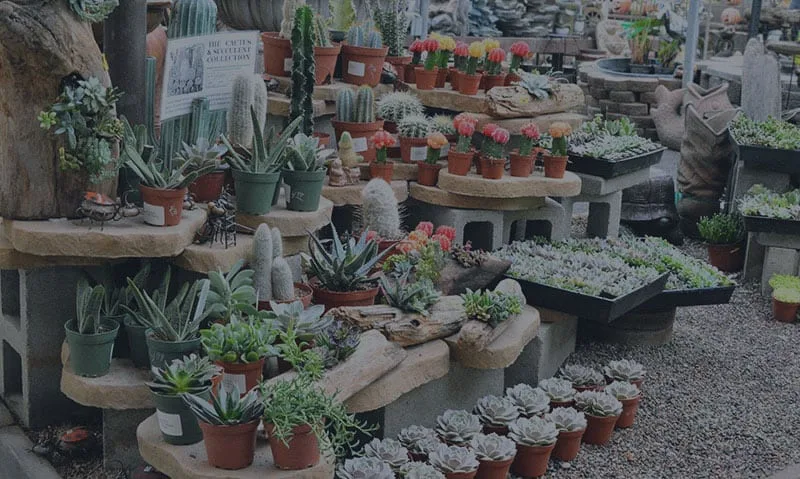Newsletter Articles
Your Southern California Gardening To-Do Checklist for November
Written by Susan B.
Starting in November, the return of Southern California rains means that our landscapes will return to their glorious green state and winter-blooming flowers get buds. It’s the time to finish fall planting in anticipation of winter harvests. And it’s also time to clean up the last of our summer gardens. The cooler temperatures will make the time you spend outside much more enjoyable. Why not use your November gardening tasks as a chance for family bonding?
Continue Planting
Plant California natives like Carex pansa (California Meadow Sedge) and Carex praegracilis (Clustered Field Sedge.) They are attractive additions to areas where you may need a groundcover. They work as an alternative to grass. And they’re deer resistant, too. Sunset suggests using blue-eyed grass (Sisyrinchumbellum), Cardinal Monkeyflower (Mimulus cardinalis), Scarlet Lobelia (Lobelia cardinalis), Marsh fleabane (Pluchea odorata), and California poppy as companions to the sedges. Mix summer-blooming perennials like Blanket Flower (gaillardia) in red and yellow and Verbena bonariensis with purple flowers in with your sedges. Scatter wildflower seeds in the area with your sedge to create the effect of a meadow in your own backyard.
Plant other flowering plants that love the cooler weather so you can enjoy their blooms now and into the winter. We suggest:
- Calendula
- Candytuft
- Foxglove
- Pansies
- Snapdragons
- Stock
- Sweet Alyssum
- Sweet Peas
Plant Winter and Spring-Blooming Flowering Shrubs
Flowering shrubs that bloom in winter and spring provide pollinators with a source of nectar that’s vital – especially during winter. Blueblossom (Ceanothus) is an excellent choice. Some varieties grow to 30-feet tall, while others form mounds that don’t exceed 2-to-3-feet tall. Creeping Blueblossom only grows to about 2-to-3-inches. But it spreads as far as 15-feet. It is native to the Southern California area.
Blueblossom cultivars have bright-to-dark green evergreen leaves. Small flowers appear in densely puffy clusters. Depending on the variety, flowers may be dark or light blue, purple, or white. After flowering, Blueblossom develops seed clusters with 3-lobes. The seed pods attract birds who eat them.
Dig holes that are at least 1 ½ times the height of the nursery container your shrub is in. You must prepare the hole before you remove the plant from the nursery pot. Before you plant your shrubs, soak them in the nursery container until water drains out of the bottom of the pot. Soaking your shrub while it’s still in the pot should soften the root ball and make it easier to remove.
To remove the bush from the container, lay it on its side, and gently tap the pot’s bottom to free the root ball from the container. Use your hands to loosen the roots and soil. Then place the shrub in the deep hole you dug – without adding soil amendments. Gradually refill the planting hole with the soil you removed, wetting the soil as you tamp it down to secure the bush in place. Once all the dirt is replaced, and you’ve secured the plant in the hole, soak the ground, so as much water as possible gets to the roots. Cover the area around the shrub with a 2-inch layer of mulch, but avoid the area directly surrounding the shrub’s trunk.
Plant Strawberries and Vegetables
Plant strawberries in early November in nutrient-rich soil. Find a planting site that’s in full sun. Allow at least 1-foot between strawberry plants because they send out runners, which is how they spread.
Take advantage of November’s cooler temperatures to sow seeds for leafy greens, including arugula, chard, collards, lettuce, and spinach. You can also sow root vegetable seeds for beets, carrots, parsnips, rutabaga, and turnips. Consider planting cole family crops like broccoli, broccolini, cabbage, cauliflower, and kohlrabi.
Suppose you don’t plan to grow vegetables throughout the winter. In that case, you can plant winter cover crops to add “green manure” to your vegetable garden beds. Tilling cover crops into the soil deep beneath the surface creates the “green manure” because the cover decomposes underground. Allow your cover crop to grow until about six weeks before you plan to start spring planting. Then mix it in with your garden soil.
Plant Trees
Nan Sterman of the Los Angeles Times urges Southern California property owners to commit to planting at least two trees during this year’s fall and winter season. Trees are critical soldiers in the war against climate change. Their benefits are many:
- They act as air filters.
- They help make the air cooler.
- They create a shade umbrella around homes, lessening air conditioners’ need to run on full power continually.
- They give wild birds a habitat.
- They shelter other animals.
- They purify the air through their ability to filter particulate matter.
Other November Garden Chores
Dig up small trees and shrubs you plan to transplant. Water them deeply to help the roots recover from transplant shock faster. Use a hand wand because it will direct the water where you want it.
Look for lawn fertilizers that are designated for fall use. Choose products that give you a combination of fertilizer and pre-emergent herbicide. Only fertilize your cool-season bluegrass. Allow warm-season bermudagrass to enter dormancy for winter.
Your roses may produce some of the best blossoms you’ve seen all year. Please don’t give in to the temptation to fertilize them. Stop feeding them in November to ensure that the rise bushes can benefit from a two-month dormancy period during January and February.
Adjust the timer on your irrigation system to reduce the frequency of watering. Don’t alter the length of your waterings. You may be able to reduce the frequency with which you water trees and shrubs from once a week to every 10-to-11 days.
There is one chore that every property owner should do in November. It will benefit your home as well as your garden. And it’s likely something you tend to forget about. We’re talking about cleaning your gutters. Not cleaning them may result in roof leaks, and cleaning them provides you with brown material to add to your compost heap.
If you haven’t already done so, pull up the summer vegetable plants that are no longer fruiting. Don’t throw the plants into your compost heap. There’s too great a chance that the plants carry soil-borne pathogens or diseases that will go back into your soil when you amend it with the compost.
November is a busy time for Southern California gardeners. You may need seeds or starter plants for your winter vegetables, or you may need mulch for your garden beds, trees, and shrubs. You may even need lawn fertilizer products for your cool-season bluegrass. Our experienced team can help you find everything you need in our stores or answer your phone questions. We encourage you to come into our stores to check out our inventory. As you know, we like to change things often, so we’re confident you’ll find new things every time you come in to shop.
Do you like what you see? Sign up for our weekly newsletter to get content like this every week!


